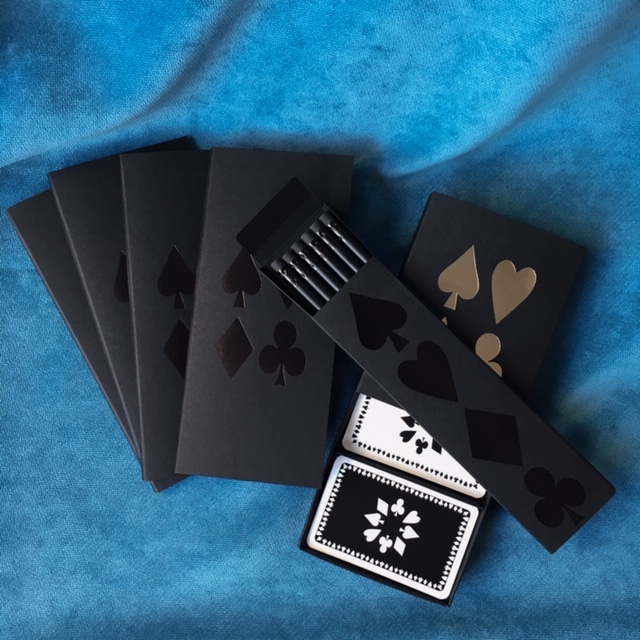
About Bridge
So many people, of all ages, play bridge these days. It is a brilliant, social and addictive game and keeps the little grey cells working!
The game of Bridge has its origins in Whist (a call for silence) and dates back to the 1500s. The word bridge is thought to be an English translation of the Russian word Biritch (Russian Whist).
In the 1900s bridge became England's most popular card game, replacing whist.
In 1925 an American, Harold S. Vanderbilt, introduced a new scoring system and this became contract bridge, which we play today.
Playing cards originated in China, and dates from the 1100s. Cards were initially used for fortune telling and gambling. Saint Bernardo in 1432 warned the 'faithful' that cards were invented by the devil. In 1495 Henry VII forbade his servants from playing cards except during the Christmas holiday.
Elizabeth I started the tax levy on the manufacture of playing cards which brought in considerable revenue to the crown. During the reign of James I it became a legal requirement to show proof of tax paid. The Ace of Spades is where the official stamp of certification was placed to show the correct English tax had been paid on the deck of cards, which is where its distinctive look comes from (the Stamp Office kept the only stock of pre-stamped Aces of Spades – the card manufacturers were forbidden to produce the Ace of Spades). The tax on playing cards lasted until 1960. During Queen Anne's reign playing card games was very popular – piquet, ombre and whist being the most commonly played.
The Worshipful Company of Makers of Playing Cards is one of the early Trade Guilds in the City of London. The Company was founded as the "Mistery (trade, art, or occupation) of Makers of Playing Cards of the City of London" by a Charter granted by King Charles 1 on 22nd October 1628. Some 164 years later, on 27th November 1792 the Court of Aldermen of the City of London granted the Company its Livery. Accordingly, though 75th in order of precedence, it is one of the older of the City Livery companies, which now exceed 100 in number. The Makers of Playing Cards was a craft, rather than a trade, company.
The number of Liverymen is limited to 150. Originally the Company was created in order to regulate and control the importation of cheap playing cards, to protect the card makers and their families, and to maintain quality. The Crown received the benefit of the duties levied by the Company agreeing to pay a tax on all packs, and the ace of spades was chosen to show the tax. Every maker of playing cards had to have a mark of his own enrolled to indicate recognition of his name.
George III playing cards – see Articles. Bridge Rules Follow this link for some good basic rules:
http://entertainment.howstuffworks.com/how-to-play-bridge.htm
Further information can be found at The English Bridge Union www.ebu.co.uk
The game of Bridge has its origins in Whist (a call for silence) and dates back to the 1500s. The word bridge is thought to be an English translation of the Russian word Biritch (Russian Whist).
In the 1900s bridge became England's most popular card game, replacing whist.
In 1925 an American, Harold S. Vanderbilt, introduced a new scoring system and this became contract bridge, which we play today.
Playing cards originated in China, and dates from the 1100s. Cards were initially used for fortune telling and gambling. Saint Bernardo in 1432 warned the 'faithful' that cards were invented by the devil. In 1495 Henry VII forbade his servants from playing cards except during the Christmas holiday.
Elizabeth I started the tax levy on the manufacture of playing cards which brought in considerable revenue to the crown. During the reign of James I it became a legal requirement to show proof of tax paid. The Ace of Spades is where the official stamp of certification was placed to show the correct English tax had been paid on the deck of cards, which is where its distinctive look comes from (the Stamp Office kept the only stock of pre-stamped Aces of Spades – the card manufacturers were forbidden to produce the Ace of Spades). The tax on playing cards lasted until 1960. During Queen Anne's reign playing card games was very popular – piquet, ombre and whist being the most commonly played.
The Worshipful Company of Makers of Playing Cards is one of the early Trade Guilds in the City of London. The Company was founded as the "Mistery (trade, art, or occupation) of Makers of Playing Cards of the City of London" by a Charter granted by King Charles 1 on 22nd October 1628. Some 164 years later, on 27th November 1792 the Court of Aldermen of the City of London granted the Company its Livery. Accordingly, though 75th in order of precedence, it is one of the older of the City Livery companies, which now exceed 100 in number. The Makers of Playing Cards was a craft, rather than a trade, company.
The number of Liverymen is limited to 150. Originally the Company was created in order to regulate and control the importation of cheap playing cards, to protect the card makers and their families, and to maintain quality. The Crown received the benefit of the duties levied by the Company agreeing to pay a tax on all packs, and the ace of spades was chosen to show the tax. Every maker of playing cards had to have a mark of his own enrolled to indicate recognition of his name.
George III playing cards – see Articles. Bridge Rules Follow this link for some good basic rules:
http://entertainment.howstuffworks.com/how-to-play-bridge.htm
Further information can be found at The English Bridge Union www.ebu.co.uk









